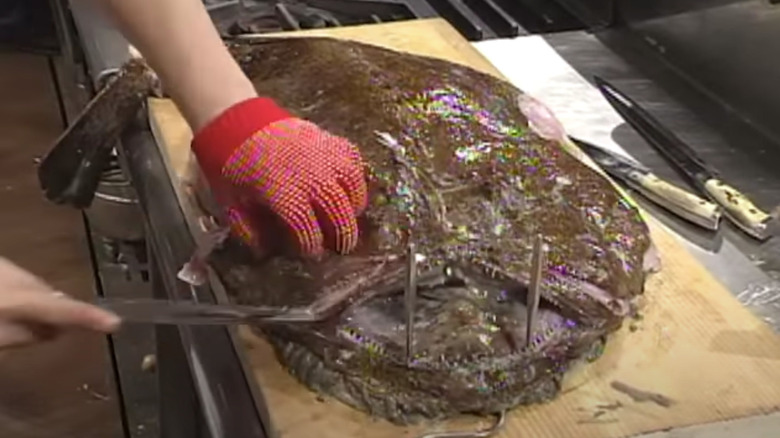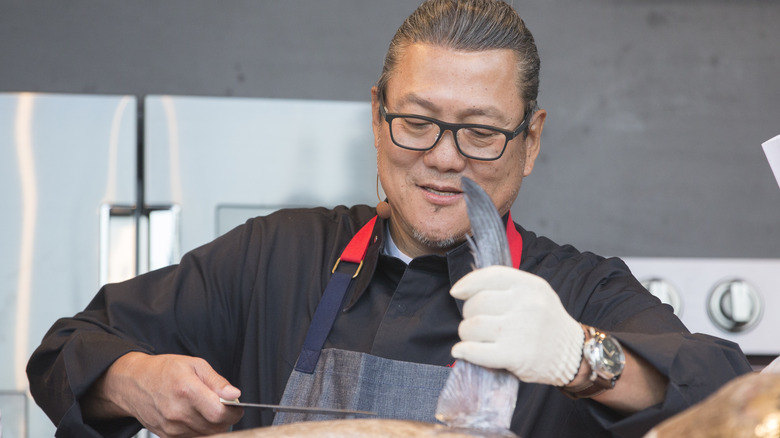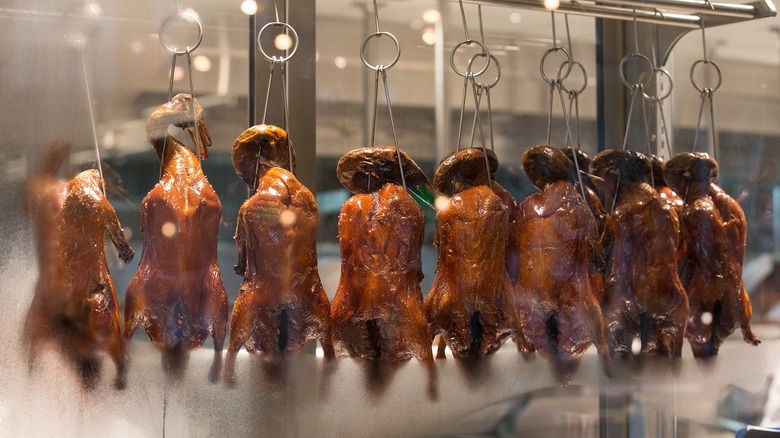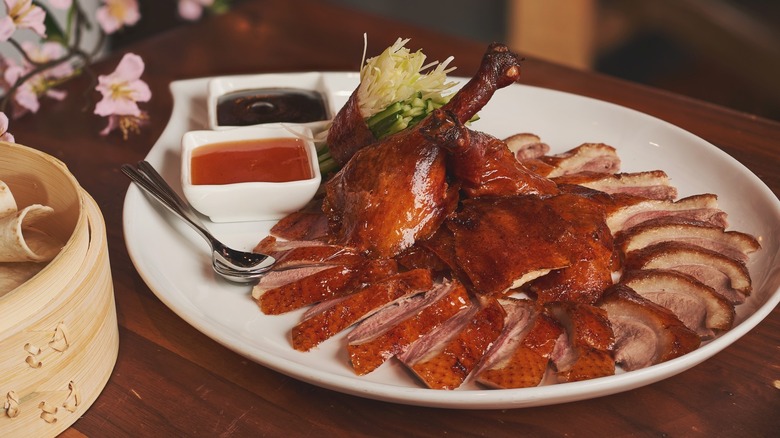The Most Difficult Ingredients On Iron Chef, According To Masaharu Morimoto
"Iron Chef" began as a Japanese cooking show in which chefs would compete against each other to create the best meal based on a specific challenge or theme ingredient. The landmark show and its spin-offs created an "Iron Chef" legacy that includes culinary greats such as Bobby Flay, Alex Guarnaschelli, and Masaharu Morimoto.
During chef Morimoto's tenure on "Iron Chef," he created dishes under stressful conditions and intense time restraints for curious judges — often while tasked with using immensely challenging ingredients. In that regard, we had to wonder which food items presented the Iron Chef with the greatest challenge while on the show.
As luck would have it, we were able to ask Morimoto which ingredients he found to be the most difficult from the series during a recent interview. Though nothing was totally out of left field, we were a little surprised by the chef's answers (particularly given some menu items at his restaurant Morimoto Asia in Walt Disney World's Disney Springs in Lake Buena Vista, Florida). Here are the most difficult ingredients on "Iron Chef" according to Masaharu Morimoto.
Monkfish can bite
Though monkfish are among the more unattractive creatures of the deep sea, this particular fish is considered a delicacy in Japan. Still, according to chef Masaharu Morimoto, he experienced a challenging moment with monkfish when filming an episode of "Iron Chef" (Season 2, Episode 24). The chef reached into a barrel to pull out the fish for preparation ... only to have the monkfish bite him.
The incident caused a fair amount of blood to spill from Morimoto's finger, which hampered the chef throughout the remainder of the competition. You can even see a bandage wrapped around Morimoto's pointer finger if you watch the episode closely (something you might not notice if you didn't know to look for it).
In the episode, Morimoto admitted he was relatively new to the world of monkfish, so he did some experimentation with his dishes. Ultimately, he served monkfish tofu with fin sake, a sashimi salad loaded with monkfish and a sesame and citrus dressing, boiled monkfish, monkfish stew with eggs, and monkfish liver miso stew.
One bite doesn't keep Chef Morimoto away from this ingredient
During our interview with Masaharu Morimoto, the chef and his team were preparing the "Momokase" experience, where he'd be serving a special treat to guests: freshly fileted monkfish. Guests will also be able to enjoy a show (along with their meal) from Chef Morimoto, as the monkfish was displayed on giant hooks behind the counter while the team prepared it.
Interestingly enough, Morimoto had the option to prepare his monkfish this way during the notorious "Iron Chef" episode featuring the fish. However, he instead chose to cut into the fish while it was laid flat on a cutting board — making it notable that he chose to make the switch to a more fantastical display of preparation at Morimoto Asia.
If you have a hankering for monkfish while visiting the restaurant on your next Walt Disney World vacation, consider ordering the ankimo. This is monkfish liver that's been steamed and is generally found on the sushi portion of the menu.
Tuna can be a tough ingredient
Another ingredient chef Masaharu Morimoto mentioned being tough was tuna. During a sushi battle episode of "Iron Chef" (Season 3, Episode 8), the chef worked with several different items under the central theme of sushi. This included conger eel, dried gourd shavings, eggs, gizzard shad — and tuna, of course.
In the episode, Morimoto was challenged by Chef Keiji Nakazawa, who adheres to the Edo sushi style. Morimoto took a more explorative, creative approach (in line with his reputation as somewhat of a rule breaker). For example, Morimoto combined tuna with Tabasco sauce, soy sauce, olive oil, and mayonnaise to create a delicious mixture for a spring roll-type dish, which he then sliced into pieces to resemble sushi cut from a roll.
Now, the Iron Chef may have named tuna as one of the more difficult ingredients he encountered on the show. But his confidence never visibly wavered during the episode — at least to our eye — and if he was experiencing difficulty? He never let it show. Despite his past difficulties with the fish, tuna still makes several appearances on the Morimoto Asia menu. You can enjoy a classic spicy tuna roll (accented with spicy mayonnaise and scallion) and several different cuts of bluefin tuna, including lean, medium fatty, and fatty belly.
Whole ducks require feather plucking
Chef Masaharu Morimoto identified whole, unprocessed duck as another challenging ingredient during our interview. While he immediately acknowledged the complexities of both monkfish and tuna when we inquired about difficult "Iron Chef" foods, it quickly dawned on him that whole duck was a tough contender, as well. He even pantomimed the process of plucking feathers from a duck for us to emphasize his point.
Now, when most of us cook with duck at home, we don't encounter the task of plucking feathers (especially when we're aiming to serve duck with a delicious and sweet orange sauce). After all, many commercially available ducks are already processed and prepared for cooking. But the feather-plucking process is a significant part of preparing a whole duck from scratch and one that presented an additional challenge to Morimoto in past "Iron Chef" competitions.
Considering Chef Morimoto's insights, it might be wise for us to stick with ducks that have already been already been de-feathered — saving ourselves from the intricate and laborious process of preparing a whole duck.
Morimoto Asia offers a Peking duck dinner for two
As you approach Morimoto Asia and walk past the street food window, you'll notice a series of ducks hanging in the window (which appear to have been cooked to some extent). When you're seated at your table and peering through the large glass windows into the kitchen, you'll also see these ducks ready to be served.
The ducks are a key component of Morimoto's famous Morimoto Peking duck dish. This meal is designed for two people and includes carved duck accompanied by a variety of sides and sauces, such as rice or noodles, sweet chili sauce, hoisin sauce, lettuce cups, and steamed flour tortillas. Not only is it a visually stunning presentation, but it's also a delectable dining experience, making it an ideal special occasion meal to share between two people. Frankly, given chef Morimoto's remarks about the complexity of preparing whole duck, it's fascinating to see that Peking duck has earned such a prominent place on the menu.





